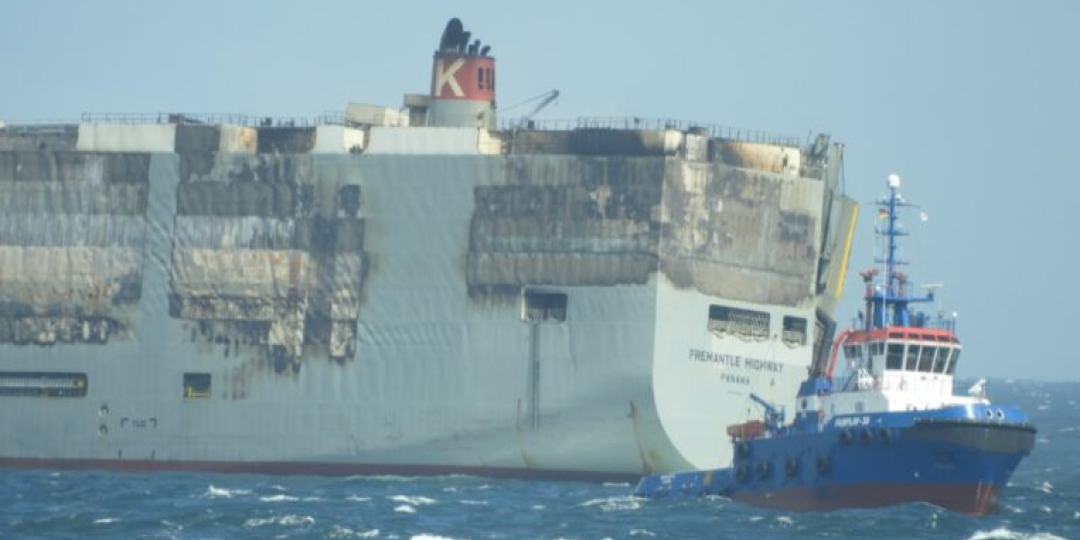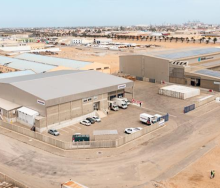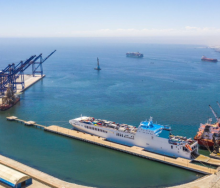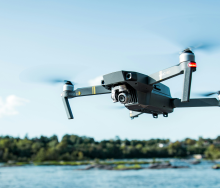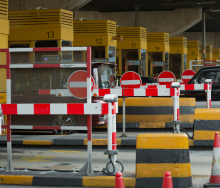Salvaging efforts have been stepped up to tow a roll-on roll-off (ro-ro) vessel away from the North Sea location where it caught fire last Tuesday, presumably when one of the lithium-ion batteries of an electric vehicle (EV) on board the Fremantle Highway ignited.
Towing of the ro-ro finally got under way yesterday afternoon, July 30, when salvaging vessels securely latched the Fremantle, but ongoing safety hazards and precarious weather conditions continued to hamper rescue efforts.
Firefighters initially tried to board the burning vessel last Thursday but had to wait until Friday when the fire had died down enough, allowing personnel to safely board the vessel.
Reports from the Directorate-General of the Dutch Ministry of Infrastructure and Water Management, Rijkswaterstaat, said that the vessel would be towed to Shiermonnikoog, an island to the west of Ameland island, where flames were first seen erupting from the deck of the Fremantle.
Rijkswaterstaat said the ro-ro would be towed to an undisclosed location north of Schiermonnikoog from where it would be towed to a nearby port for ongoing salvaging.
It could not be confirmed whether the Fremantle will be towed all the way back to the Port of Bremerhaven from which it had departed bound for Egypt.
Rijkswaterstaat also said that an oil-spill prevention team on board a specialised vessel, the Arca, was following the Fremantle in the event of an environmental situation in the Wadden Sea archipelago, a Unesco World Heritage Site on the Netherlands’ North Sea coastline.
It has furthermore been reported that none of the 21 crew, all from India, has died after the first reported fatality.
One of the crew apparently died after leaping from the ro-ro to safety. At least three other crew followed suit, sustaining broken bones.
Most of the crew were airlifted from the Fremantle and treated for smoke inhalation.
Although unconfirmed at this stage, there is strong speculation that the fire was started by an unstable lithium-ion battery, possibly igniting because of the pressurised conditions in the hull of the Fremantle.
Last year in February, a similar electronic vehicle (EV) fire led to the complete destruction of the Felicity Ace, a ro-ro carrying about 4 000 cars which eventually sank off the coast of the Azores.
The fire that raged on board the Fremantle had all the tell-tale signs of an EV fire – thick, greyish-white smoke that billowed for days out of the vessel’s hull, hard to extinguish using seawater, and compounded by fears that too much water could have caused the ro-ro to sink.
Shoei Kisen, owners of the Fremantle which K Line leases, initially said there were only 25 EVs on board the vessel, which was carrying a total of 2 857 cars.
But figures seem to have been fudged, or incorrectly reported, when the Fremantle was still on fire.
It now appears that the vessel is carrying 3 783 cars, of which 498 are EVs.
The Fremantle fire has sparked renewed discussion around the safety of EV units at sea.
An engineer told Freight News that a fire fed by lithium-ion batteries could reach a burn high of almost 3 000 degrees, causing a “thermal runaway” environment that, in the hull of a ro-ro vessel, is almost impossible to control or extinguish.
